One of the biggest developments in recent weeks has been the breakout in the U.S. Dollar Index ($USD). I've been expecting it and it happened last week:
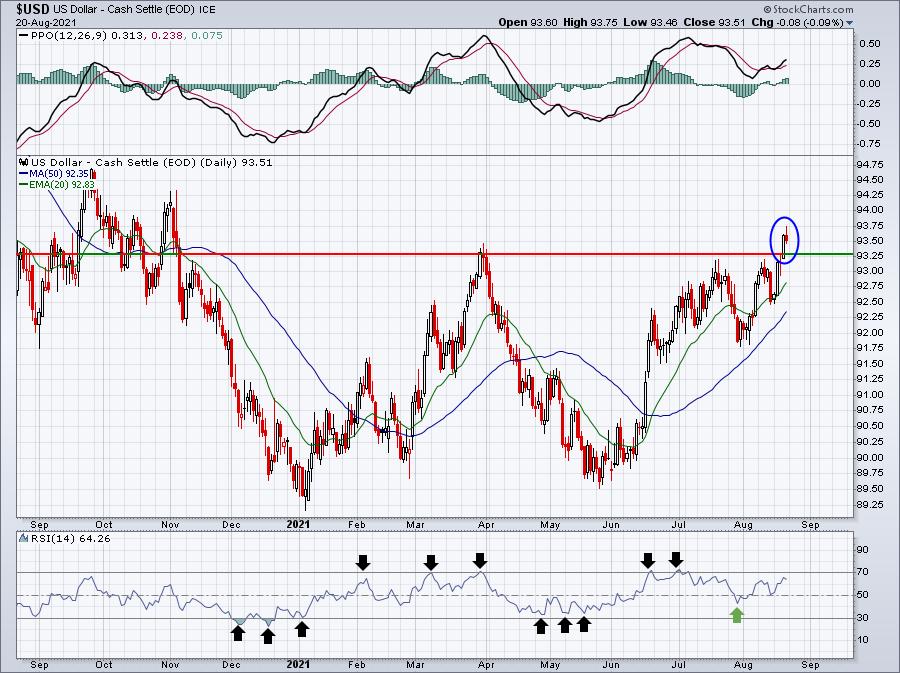
The black arrows are marking all of the RSI tops at 65 and above and all the bottoms at 35 and below. When the RSI stretches back and forth from 30-70, it's generally indicative of trendless price action. In July, however, the RSI bottomed near 40 and we've seen a breakout. The USD is providing us early technical signs of an uptrend. That's significant because it's confirming my dollar bullishness. I believe the best indication of dollar direction lies in the difference between our 10-year treasury yield ($UST10Y) and Germany's ($DET10Y):
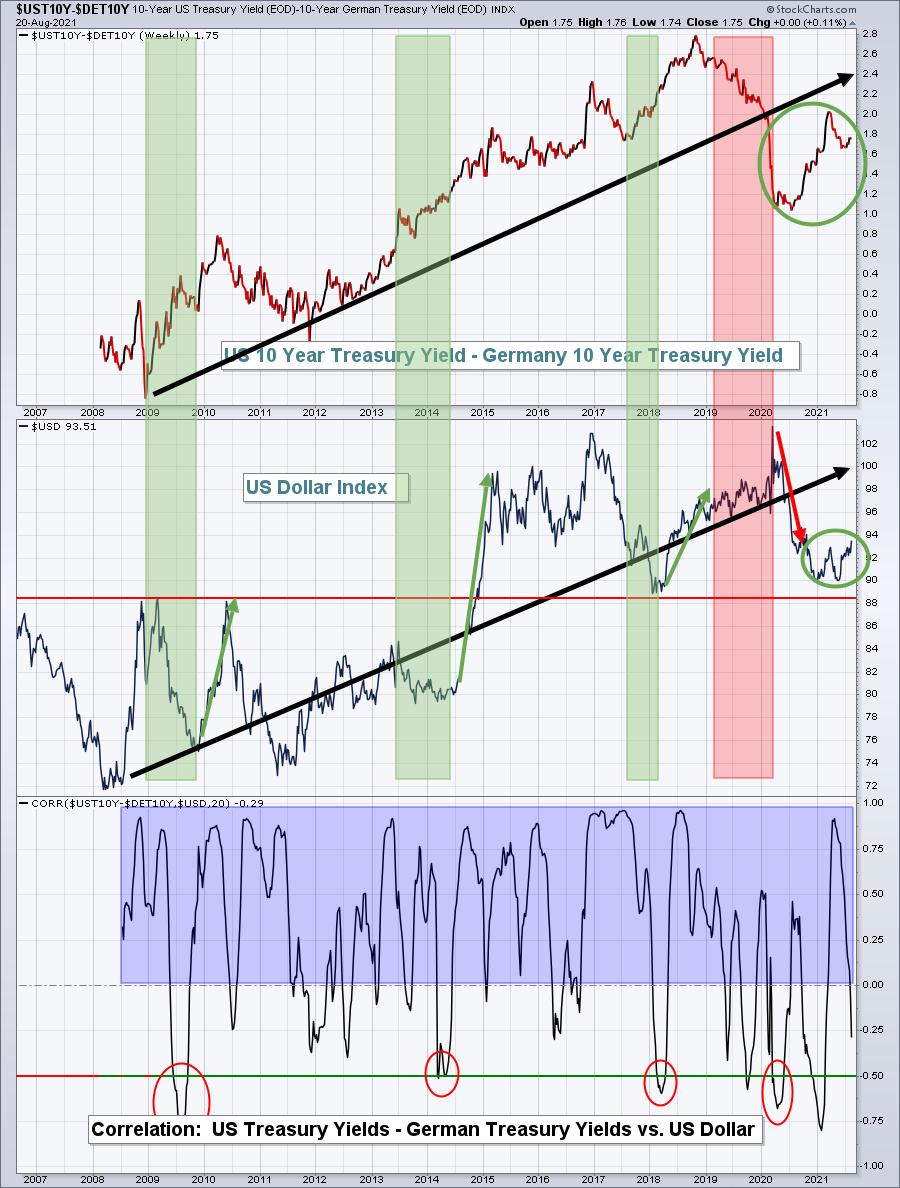
The bottom of this chart highlights the positive correlation between the difference in treasury yields (US minus Germany) and the direction of the USD. It's hard to dispute how well these two move together. Since the middle of 2020, interest rates in the U.S. have been moving higher much more rapidly than in Germany, suggesting our economy is stronger. That, in turn, should propel the dollar higher, but it's been stubborn. However, the breakout on Thursday likely signals further strength in the dollar to come.
Stick with me here.
Should the dollar rise further, you need to know that energy (XLE) and materials (XLB) struggle on a relative basis during a period of dollar strength. I believe this is obvious from the following long-term weekly chart:
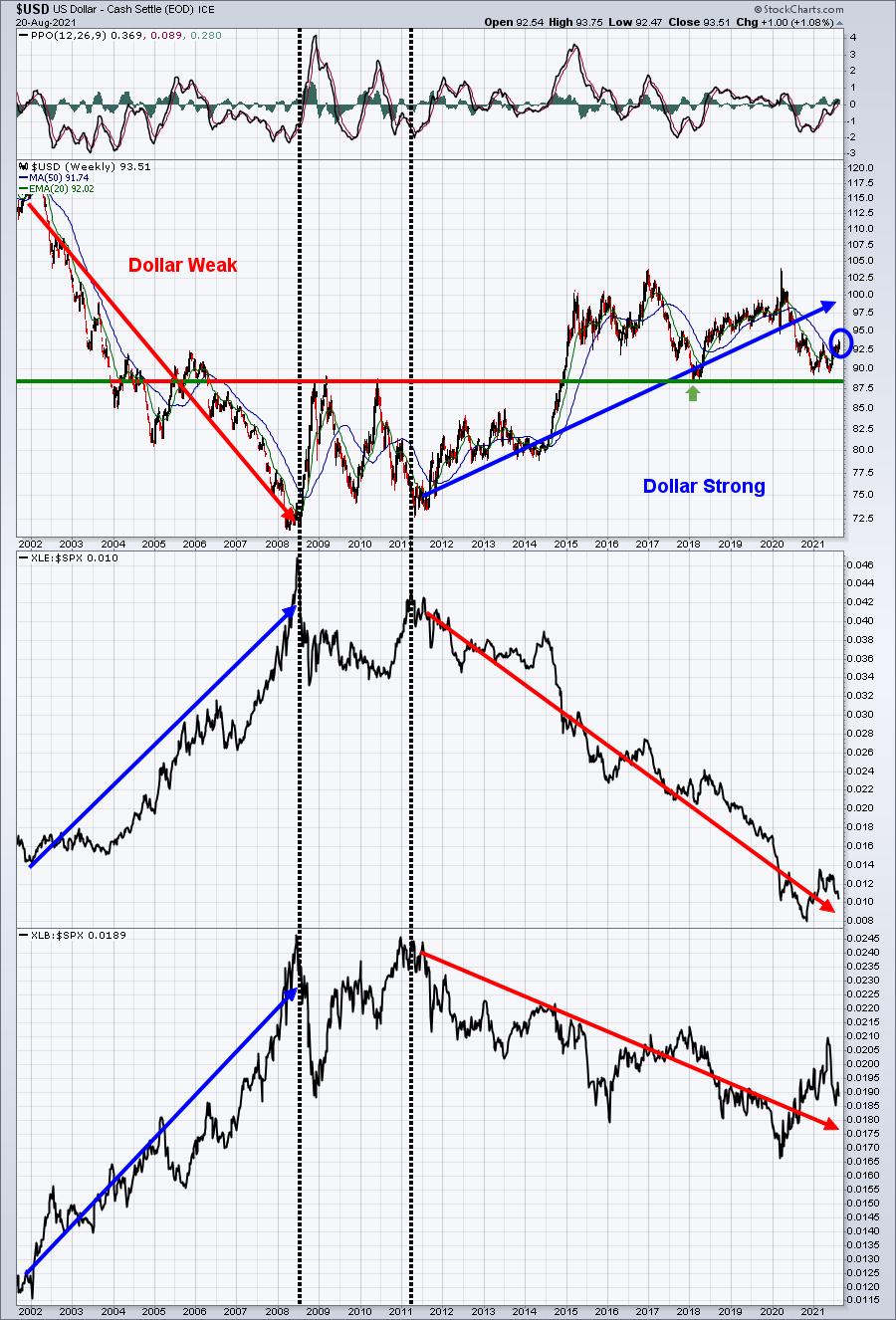
This chart is exactly why I continue to say to AVOID gold (GLD). Gold has underperformed the S&P 500 for a decade:
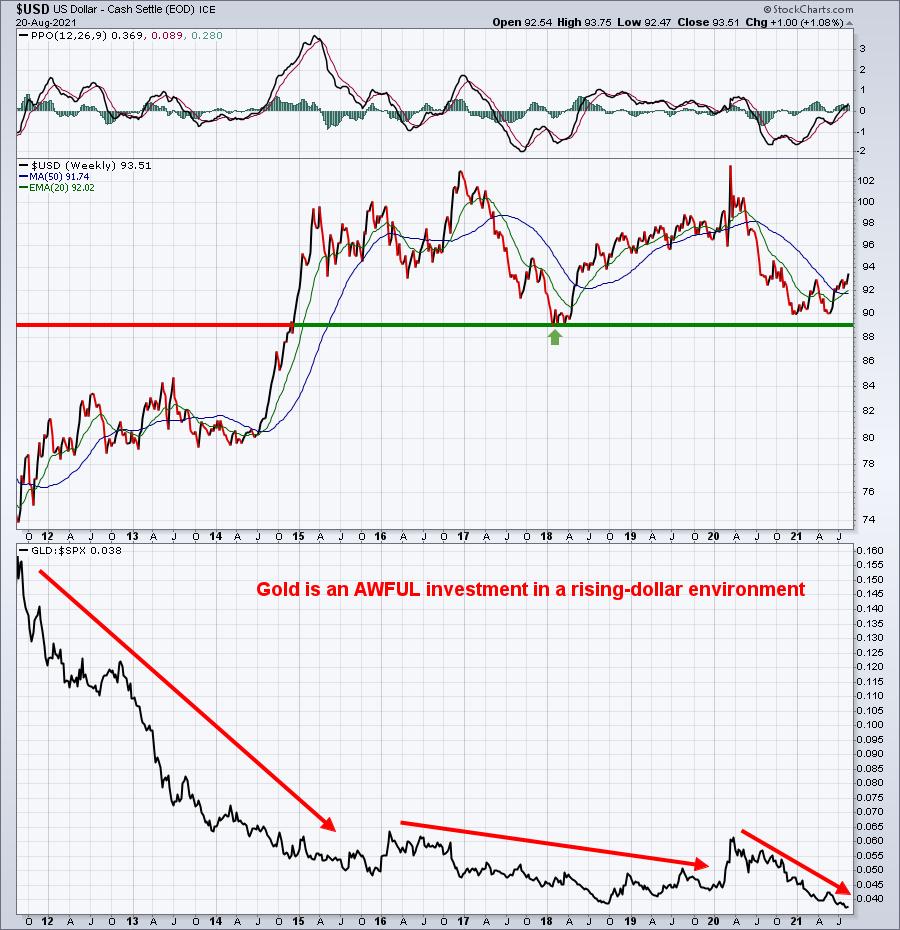
Gold has its moments. It benefits from the increase in fear when the S&P 500 corrects. That's it. Hedging against corrections in a secular bull market simply costs you money. If it makes you feel better, then go for it. But I have no interest in gold for the reasons and charts above. Should the U.S. Dollar Index break below 88 (green arrow), then we have a different story. Until then, I'll stick with just about any other investment.
So that brings me to the worst two groups to invest in right now - of course, in my opinion.
I want no part of steel ($DJUSST) or aluminum ($DJUSAL). They've both benefited tremendously by the huge imbalance in demand vs. supply as our economy has reopened. That imbalance will reverse, however, and I believe longs will be left holding the bag. Momentum issues have already begun on weekly charts:
$DJUSST:
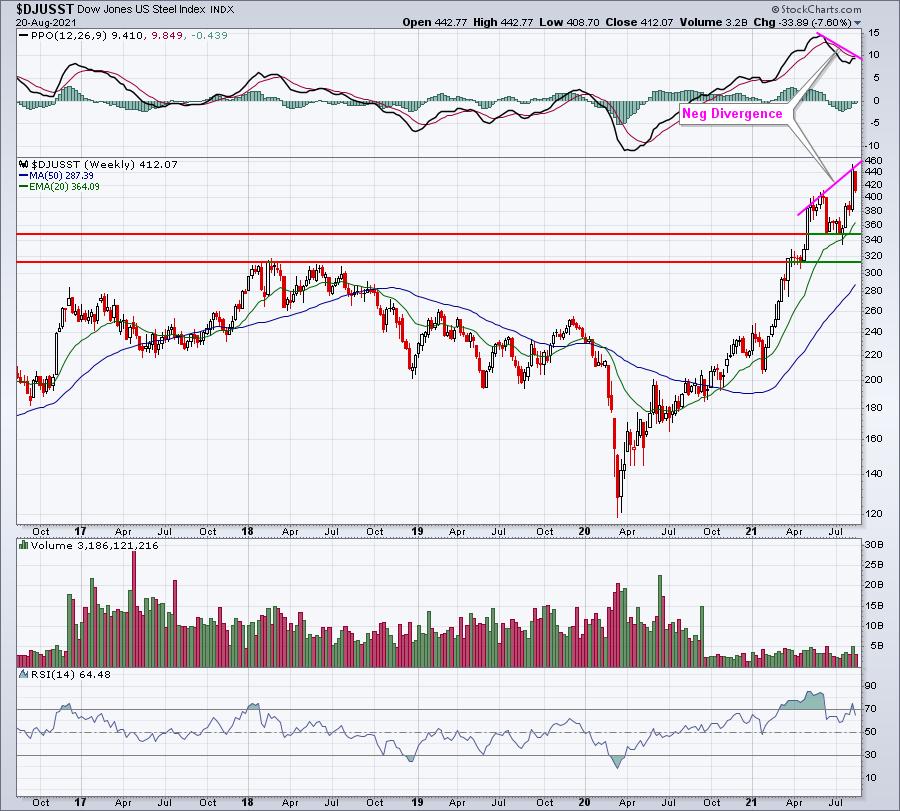
$DJUSAL:
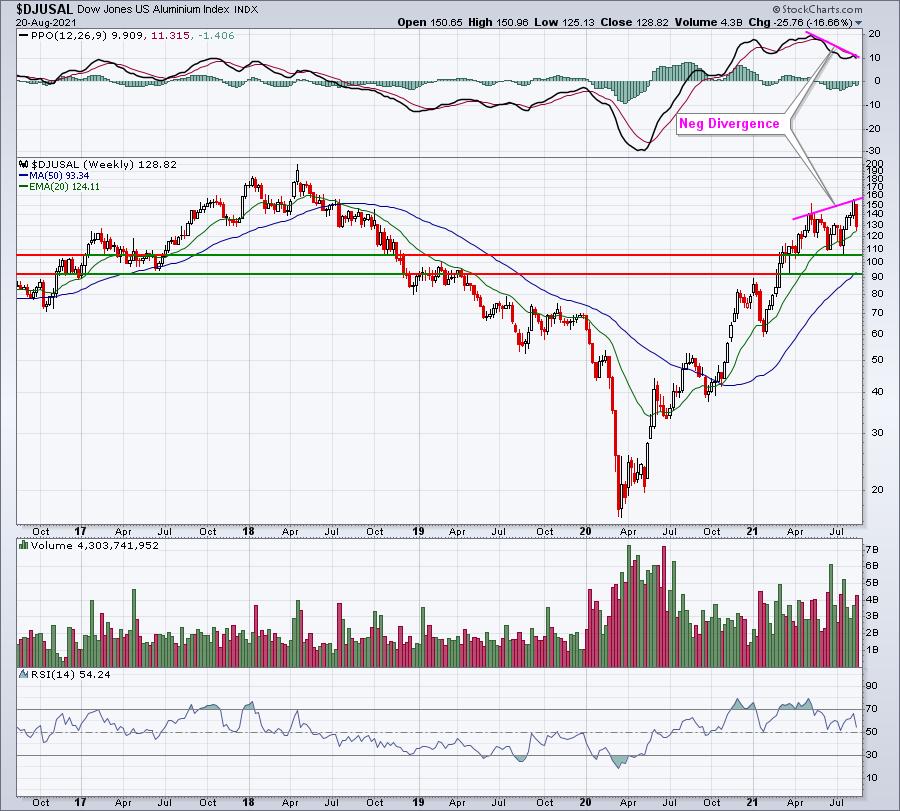
I've provided support levels that I'd look for on both charts. The key will be the U.S. Dollar Index, so keep an eye on that. If I'm right, and the dollar trends higher, that will keep inflation completely in check. Throw in a more stable supply vs. demand later this year and into 2022 and I see investors flocking for the exits here.
On Monday, I'll be featuring a group in our FREE EB Digest newsletter that's just broken out from a recent downtrend and is poised for a significant rally into year end. Not only have its technical indicators turned positive, but the industry has also outperformed the S&P 500 during every year of this secular bull market during the month of September. Every year since 2013. If you'd like to receive this information and position your portfolio accordingly, simply CLICK HERE and provide me your name and email address in the space provided. Subscription is completely free, no credit card required, and you may unsubscribe at any time.
Happy trading!
Tom






